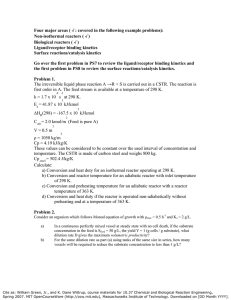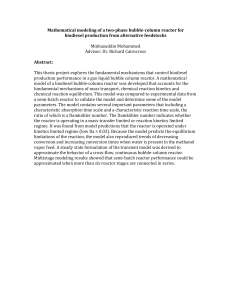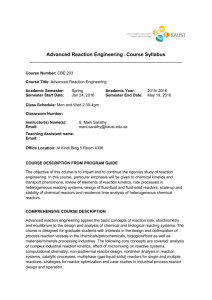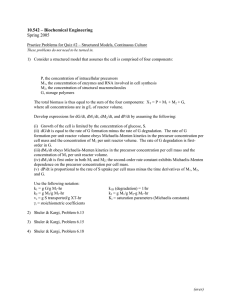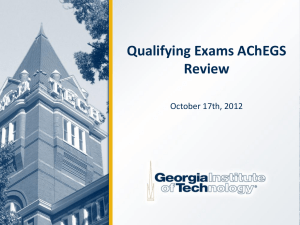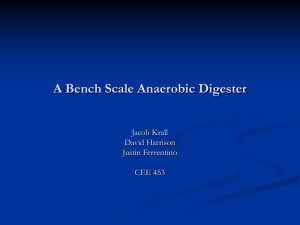ChBE 4200 - School of Chemical & Biomolecular Engineering at
advertisement
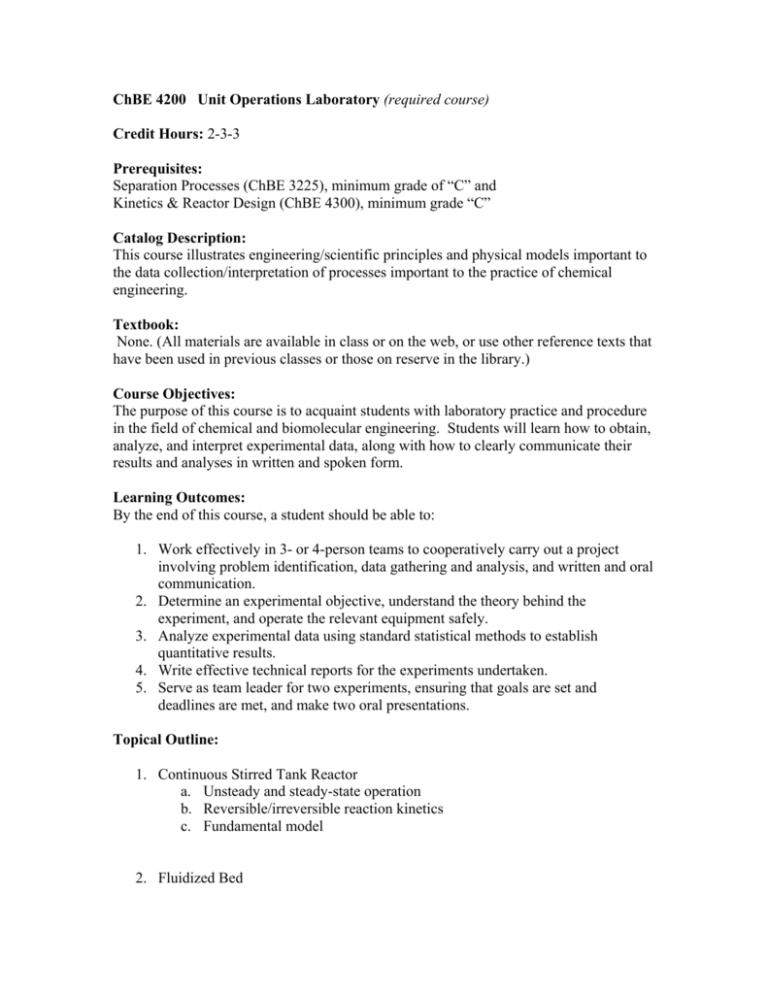
ChBE 4200 Unit Operations Laboratory (required course) Credit Hours: 2-3-3 Prerequisites: Separation Processes (ChBE 3225), minimum grade of “C” and Kinetics & Reactor Design (ChBE 4300), minimum grade “C” Catalog Description: This course illustrates engineering/scientific principles and physical models important to the data collection/interpretation of processes important to the practice of chemical engineering. Textbook: None. (All materials are available in class or on the web, or use other reference texts that have been used in previous classes or those on reserve in the library.) Course Objectives: The purpose of this course is to acquaint students with laboratory practice and procedure in the field of chemical and biomolecular engineering. Students will learn how to obtain, analyze, and interpret experimental data, along with how to clearly communicate their results and analyses in written and spoken form. Learning Outcomes: By the end of this course, a student should be able to: 1. Work effectively in 3- or 4-person teams to cooperatively carry out a project involving problem identification, data gathering and analysis, and written and oral communication. 2. Determine an experimental objective, understand the theory behind the experiment, and operate the relevant equipment safely. 3. Analyze experimental data using standard statistical methods to establish quantitative results. 4. Write effective technical reports for the experiments undertaken. 5. Serve as team leader for two experiments, ensuring that goals are set and deadlines are met, and make two oral presentations. Topical Outline: 1. Continuous Stirred Tank Reactor a. Unsteady and steady-state operation b. Reversible/irreversible reaction kinetics c. Fundamental model 2. Fluidized Bed 3. 4. 5. 6. 7. 8. a. Ergun equation b. Minimum fluidization velocity c. Gas and liquid fluidization d. Pressure drop Agitated Aerobic Fermentation a. Gas-liquid mass transfer coefficient b. Yeast catalyzed fermentation c. Gassed power consumption d. Stirred reactor scale-up Heat Exchanger a. Shell and tube and plate types b. Co-current and counter-current flow c. Overall heat transfer coefficient d. Fouling coefficient Fractional Distillation a. McCabe-Thiele method b. Overall column efficiency c. Murphree plate efficiency d. Optimum feed plate location e. Reflux ratio Isomerization in a Packed Bed Reactor a. Glucose-fructose isomerization b. Michaelis-Menten kinetics c. External mass transfer d. Pore diffusion e. Rate limiting step f. Thiele Modulus and Effectiveness Factor g. Packed bed mass and volumetric productivity Protein Separation from Fermentation Broth a. Biomass and protein quantification b. Centrifugation, sonication, tangential flow filtration, and homogenization c. Bradford assay d. Lambert-Beer’s law for absorbance Enzyme Membrane Reactor a. Biocatalytic reaction b. Membrane filtration c. Continuous stirred tank reactor d. Biot’s law for optical activity e. Enzyme leakage rate

